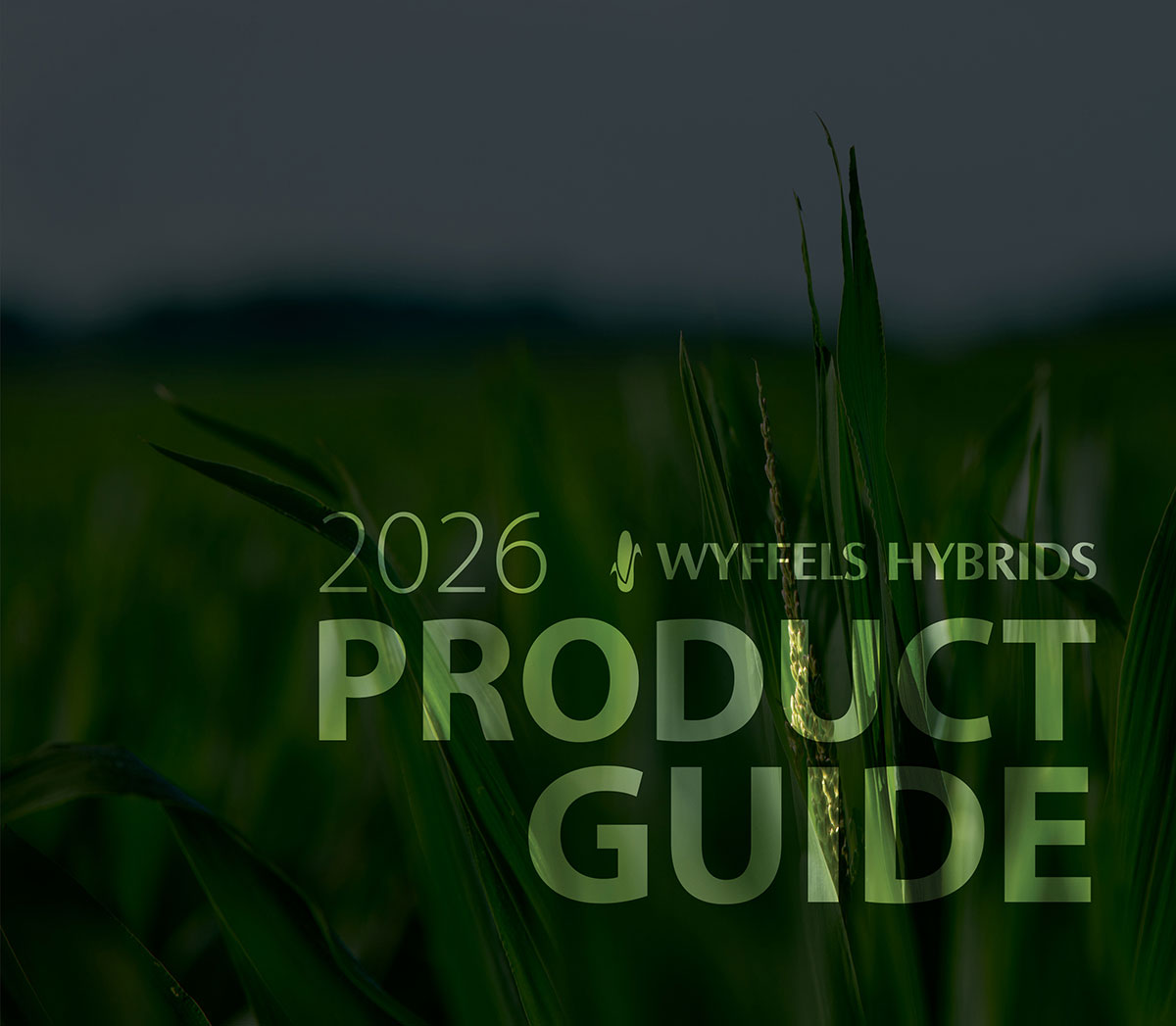WEED MANAGEMENT
Controlling weeds is a critical management practice for successful corn production. There are many different approaches to weed management and some pitfalls to avoid. This issue of Between the Rows will cover some key aspects of weed management and tips to avoid costly mistakes.
Start Clean
Starting with clean fields is key to protecting yield potential. Clean doesn’t necessarily mean clearing the soil of residue or cover, but rather allowing the corn crop to emerge without actively growing weed competition. Research has shown that weed control within the first 4 to 6 weeks after crops are planted is critical to avoid a yield penalty. Early season weed control can be accomplished using a variety of tactics including tillage, herbicides, cover crops, or a combination of all.
Burndown Herbicides
Burndown herbicides need time and adequate temperature to control weeds, as they are most effective on actively growing plants. A good rule of thumb is to apply a burndown if the forecasted daily low and high temperatures add up to 90 degrees or above. In order to achieve timely control, it is recommended to apply burndown treatments at least 10 to 14 days before planting, especially if weed cover is thick.
Some burndown herbicides require an interval of time between application and corn planting to reduce the risk of crop injury. One of the most commonly used burndown herbicides is 2,4-d which requires 7 to 15 days between application and corn planting, depending on formulation and rate. Always consult specific herbicide labels for planting limitations.
Preemergence Herbicides
There are many preemergence herbicide options that provide residual control of a broad spectrum of weeds. Most preemergence herbicides need to be incorporated into soil by shallow tillage or rainfall in order to effectively control germinating weeds. Some preemergence herbicides have activity on small, emerged weeds while also being safe for emerged corn. Table 1 shows corn growth stage restrictions for some common preemergence herbicides.
Postemergence Herbicides
Postemergence herbicides are an effective method to manage weeds, especially for weeds that escape preemergence herbicide applications. Application timing and weather have a large influence on herbicide performance. Larger weeds are more difficult to control and compete aggressively with corn for resources. Weed control is also more difficult in stressful environments, such as during a drought. Weed growth slows when plants are stressed, reducing the uptake and movement of most herbicides.
Some weeds will build up a waxy coating on their leaves during hot and dry conditions to conserve water. This wax buildup, often referred to as “hardening off,” interferes with herbicide absorption. Adjuvants can be added to increase absorption under these conditions, but this can come at the cost of crop safety. In stressful environments, it might be better to wait for more ideal growing conditions before spraying.
Crop safety
Crop tolerance to herbicides is achieved by several methods, with plant metabolism being one of the most common. Corn and many other crops have the ability to quickly degrade many herbicides into non-lethal compounds through specific metabolic pathways. If plant metabolism is slowed by stressful weather conditions, many commonly-used herbicides can cause crop injury.
Large temperature swings or drought stress can decrease plant metabolism causing increased risk of crop injury. Sometimes it is best to wait a few days until the stressful conditions subside and plants are able to resume normal growth.
If stressful conditions persist, other measures such as switching herbicides may be required. Safeners are included with some herbicide formulations to reduce crop injury potential, but they aren’t failsafe in all conditions. Consider the following management practices to reduce the risk of crop injury to herbicides.
Management practices to reduce crop injury risk from herbicides
• Apply herbicides prior to the V5 corn growth stage.
• Use drop nozzles to reduce the amount of herbicide entering the corn whorl.
• Properly maintain and calibrate sprayers.
• Check herbicide labels for potential insecticide interactions and other restrictions.
• Avoid herbicide application when the corn plant is under environmental stress.
• Avoid application directly before or after expected large swings in daily temperature.
• Avoid application when the sum of daily high and low temperatures is less than 90 degrees.
• Avoid applications of growth regulator herbicides during periods of rapid corn growth.
• Only use label-recommended additives.
• When tank mixing herbicides, always follow the label with the most restrictive directions of use.
Weed Resistance
Weeds have developed resistance to most classes of herbicides, and once a weed develops resistance it can’t be reversed. The following management practices will delay the development of resistant weed populations.
Management practice to help delay weed resistance
• Integrate non-chemical weed control strategies such as cultivation, crop rotation, cover crops
• Start with clean fields
• Rotate herbicide site of actions (Table 2)
• Use multiple herbicide site of actions for target weed (herbicide premixes, tank mixtures, multiple pass programs)
• Use full labeled rates
• Prevent weed escapes by spraying timely. Big weeds are difficult to control
• Prevent weed escapes from going to seed
Summary
Weed pressure can quickly reduce corn yield potential throughout the growing season. Take steps to ensure your crop emerges in a weed free environment, and be prepared to control weeds that might emerge after corn emergence. Delay the development of weed resistance by following a few key management best practices. Lastly, always read and follow the instructions and restrictions listed on the herbicide label to reduce crop injury and maximize herbicide performance. A quick and easy resource to look up herbicide labels is http://www.cdms.net/LabelsSDS/.
